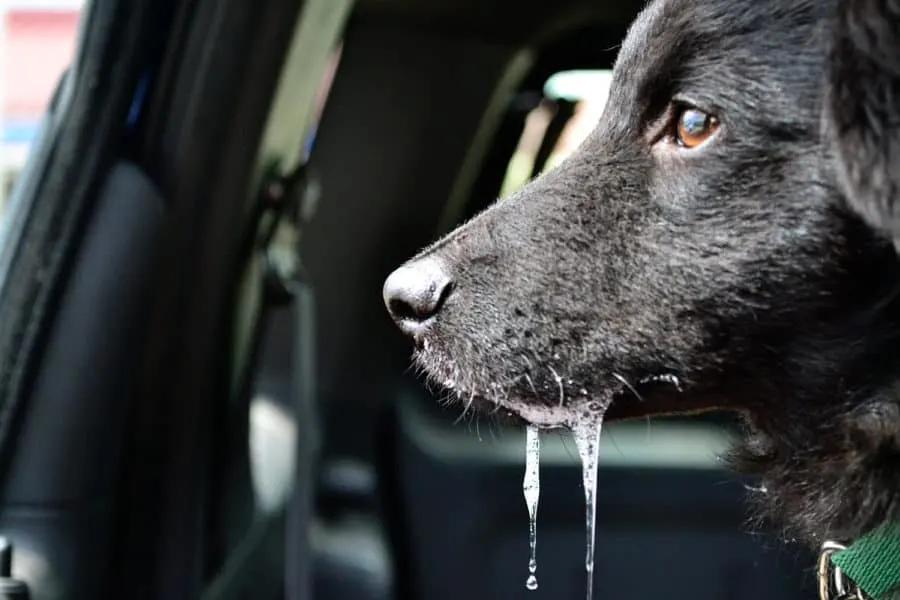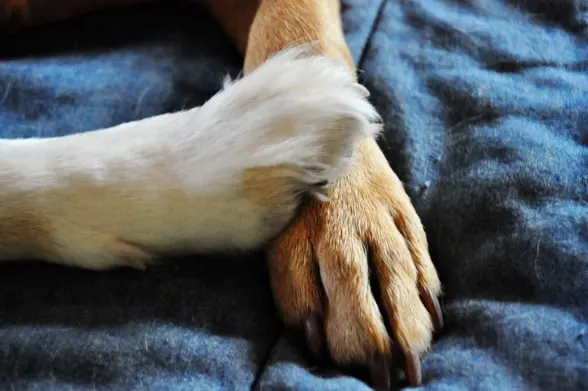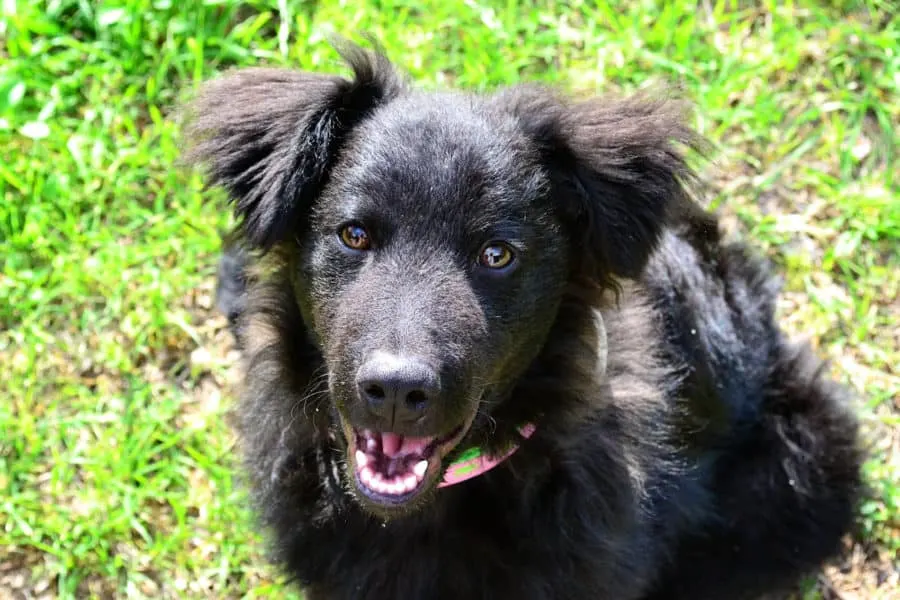
Let’s face it: whether you have two legs or four, stress is a part of life. With Irie’s loss and Barli’s adoption last month, we know that our pets have been experiencing stress as they cope with multiple life changes so close together. We’ve been working hard to make sure that Tiki adjusts to life without her companion of 10 years while, at the same time, learning to live with Barli. And we’re making sure that Barli feels comfortable in his new home with his canine, feline and human family members, adjusts to life outside the shelter where he resided for three months, succeeds in his training, and gains the confidence he needs to handle stressful situations as they arise.
This post is sponsored by CEVA Animal Health, makers of ADAPTIL® for dogs. All statements and opinions are entirely our own. As always, we only share products that we use with our own pets!
One way we’re helping both Tiki and Barli is with ADAPTIL® for dogs products (spray, diffuser and collar). ADAPTIL® copies the natural, canine-appeasing pheromone that dogs have known since birth. Dog Appeasing Pheromones are odorless and humans and cats aren’t affected, just dogs who will feel safer and more secure in their environment because of this pheromone.
This month ADAPTIL®, along with the American College of Veterinary Behaviorists, is recognizing De-Stress Your Pet Month, a time, to recognize stress triggers and to learn to reduce your pet’s stress!
It’s De-Stress Your Pet Month – and we’ve teamed up with @ACVBbehavior to provide tips and information all month! Stay tuned. 🐶🐱💙 #DeStressYourPet pic.twitter.com/bNfnuzEHyz
— You Love Your Pet (@YouLoveYourPet) April 5, 2018
We’ve been working on ways to reduce Tiki and Barli’s stress–and want to share some of our favorite tips for ways to reduce your dog’s stress as well!

1. Identify your dog’s stressful situations.
If you’ve been living with your dog for a while, you probably already know what situations–or types of situations–cause stress. Our Irie was always afraid of thunder, gunshots, fireworks, and loud trucks–basically stresses that involved loud noises. When we adopted Barli last month, he vomited on the ride home from the shelter but we figured it was a case of nerves from meeting new people and a new dog and leaving the only home he could remember. The next week when a thunderstorm rolled in, we braced ourselves–but Barli was unfazed. However, when we got back in the car a few days later for a trip to the park, Barli immediately began drooling and soon vomited. We realized that, for Barli, car rides equal scary situations. His fearfulness is completely different than that we saw in Irie throughout her life, but we know we have the tools to help de-stress him.

2. Build up to stressful situations slowly.
Rather than jumping into the car for day trips, we realized we were first going to have to desensitize Barli to the car, taking baby steps to show him that the car means fun! Wearing an ADAPTIL® Calm On‑The‑Go Collar, we’ve slowly, slowly re-introduced Barli to the car. He’s progressed from just sitting in the car (engine off) and eating treats to sitting in the car with the motor running, backing out of the carport then pulling back in, driving to our gate and back, short trips, and, finally, last week’s trip the beach!

3. Keep the calm.
Rather than letting anxiety and nervousness build up in the first place and then working to de-stress your dog at that point, try to head off the nervous behavior before it begins. It’s easier to keep your dog from getting nervous than it is to bring your dog down from a state of nervousness or fear. If you see your dog is getting stressed, take a break, distract your dog, or work to remove him from the source of the stress, if that’s possible.

4. Remain calm yourself.
Dogs pick up on our moods–so it’s important to remember to take a deep breath and remain calm when situations are stressing us out as well. I have to remind myself not to tense up and get irritated when I hear people target practicing near our home; I don’t want the dogs to pick up on my mood and sense that there’s something for them to stress about as well.

5. Exercise in advance of stressful situations.
Just as exercise helps humans better deal with stress, exercise helps soothe our dogs as well. Last week, we visited John’s relatives in a nursing home in South Texas; before we reached the facility, we stopped in the small town of Shiner for a walk in the city park. We walked both Barli and Tiki, which helped them remain calm during the nursing home visit. It’s a trick we use for just about every potentially stressful situation. Before every veterinary visit, we always give our dogs a long walk. Not only does it keep them calmer at the vet’s office, but it helps me as well! If your dog’s trigger is thunder, stay abreast of the weather and plan an extra long walk BEFORE the storms roll in or try some indoor exercise, whether that’s fetch on the stairs or an “Easter egg hunt” for treats throughout the house.

6. Turn up the sound.
We play the radio in the car on trips to help drown out traffic noises; when we’re in a hotel room, we play the television until bedtime then we turn on a white noise app to help muffle hallway sounds.

7. Lend a helping hand.
Pet your dog or sit next to him to comfort him during stressful situations. This isn’t coddling–it’s one friend helping another through a tough time. Act as if nothing’s wrong, and pet your dog and talk in a soothing voice.

8. Set up your dog to succeed.
With a new dog in our home, we’ve worked to make the transition successful for everyone including the resident pets. John built a small Dutch door to prevent Barli from going upstairs to our offices; this gives the cats a “puppy-free zone” and helps with housetraining as well. We’ve also worked to help Tiki and Barli bond, giving Tiki extra attention to make sure she doesn’t feel left out. We’ve added a new bed for Barli so Tiki still has full use of all of her favorite items, and we’ve added an ADAPTIL® Calm Home Diffuser. The clinically-proven, veterinarian-recommended diffuser covers about 700 square feet, so the entire downstairs that Barli can access has coverage. The diffuser (which will be refilled in about a month) continuously provides soothing Dog Appeasing Pheromones to help both Tiki and Barli feel secure and comfortable around each other. (If you’re traveling, ADAPTIL® Travel Spray can be used on your dog’s crate or bedding in an unfamiliar hotel room.)

9. Take a time out.
When your dog is feeling too stressed, it can help to take a time out. If your dog’s crate trained, now’s the time for a quiet period in the crate, with a minimum of stimulation. Similarly, a quiet room can help an overly-anxious dog unwind and reset to a calmer state of mind.

10. Create a distraction.
Although you try to manage stressful situations, introducing your dog to them slowly, sometimes there’s just no escaping a stressful situation. Whether it’s fireworks, a thunderstorm, gunfire, or other stressor, sometimes you’re just going to have to wait out the stressful event. Distractions can be a great way to help keep your dog’s stress level down. Training exercises like “dog pushups,” asking your dog for a sit, down, then stand, will distract your dog from what’s going on around you. If your dog’s not too upset to eat, enjoying a treat or chew can help take your dog’s mind off what’s happening around him.
Stress is an unavoidable part of life–but we can help reduce the stress in our dogs’ lives with just a little preparation. After all, that’s what best friends are for!
For more information on ADAPTIL®:
- visit the ADAPTIL® site
- where to buy ADAPTIL®
- follow ADAPTIL® on Facebook
- follow @AdaptilUS on Twitter
- follow on Pinterest
- Review: Jimmy BX7 Pro Anti-Mite Vacuum Cleaner - December 16, 2024
- 🎉 GIVEAWAY: Lord of the Pets Portrait of Your Dog! - November 26, 2024
- Review: Lord of the Pets Portraits - November 17, 2024
